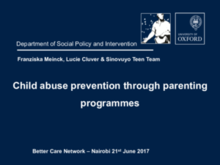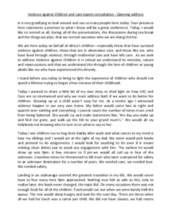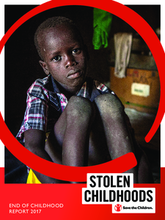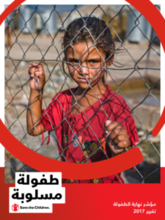Displaying 631 - 640 of 1070
This presentation describes the process, key findings, and recommendations from the Sinovuyo Teen Study, a project of the World Health Organisation's Parenting for Lifelong Health.
This presentation provides an overview of violence against children in residential care facilities in Africa.
This document includes the keynote address given on the first day of the Africa Expert Consultation on Violence against Children (VAC) in All Care Settings by Ruth Wacuka, Kenya Society of Careleavers.
This presentation describes the issue of violence against children in alternative care settings in East and Southern Africa and offers recommendations on how to strengthen the care workforce to ensure it is equipped to prevent and respond to violence against children in alternative care.
This paper reports the findings from an Australian study that examined longitudinal data on reasons for entry to care, trajectories in care and patterns of reunification and associated factors.
This report compiles and analyses the most robust and up-to-date child protection data that exists across the 4 nations in the UK for 2017.
Every child deserves a childhood of love, care and protection so they can develop to their full potential, but this is not the experience for at least a quarter of our children worldwide. This new report – the first in an annual series – takes a hard look at the events that rob children of their childhoods.
Every child deserves a childhood of love, care and protection so they can develop to their full potential, but this is not the experience for at least a quarter of our children worldwide. This new report – the first in an annual series – takes a hard look at the events that rob children of their childhoods.
This article describes a research study investigating child safety in biological and non-biological kinship care placements.
The objectives of this analysis are to examine the whether gendered and parental attitudes of caregivers in South Kivu, Democratic Republic of Congo (DRC) were associated with their adolescent girls’ experiences of violence and girls’ attitudes towards intimate partner violence (IPV).







